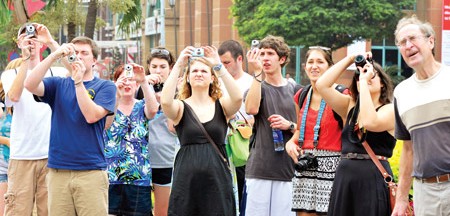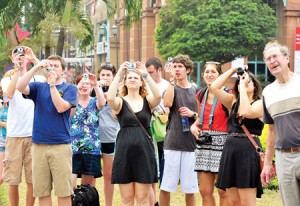Depending on your purpose of visit, there are several factors to consider when planning to visit Vietnam. The season, holidays and the weather in general are crucial things to think about before booking your flight.
Vietnam is considered a long country, stretching more than a thousand miles from Sa Pa in the North to Mekong Delta in the South. There are two climates in the country, the Northern climate which has four seasons, and the tropical climate which has the dry and wet seasons. The Hai Van Pass is the meteorological divide between the two climates, between Hue and Danang.
The climate in South Vietnam is mostly dry, especially from December to April and even part of May.. This is ideal for outdoor people who love the beach and nature in general. The downside though is that the season is so dry that the streets can get so dusty and dirty. Motorbikes, which are a major means of transportation in the area, also expel smoke that can cause pollution and big discomfort especially to foreign visitors. As such, local residents usually wear facial masks during this time.
While it is steadily hot in the lowlands, the air is surprisingly cool in the highlands. Between March and May is the hottest time of the year and such an inconvenience for the local Vietnamese. But for international tourists, this kind of contrast in temperature is a big attraction to them compared to the usually predictable weather in their home country. From September to December, the temperature starts to drop. The rainy season ends between November to January, the mark of influx of tourist arrivals in the country.
North Vietnam has four seasons: hot and humid in the summer; and cool and dry in winter. In the Northern Highlands, temperature can go as low as 0 Degree Celsius. It snows even in Sa Pa. In Hanoi, spring is the best time of the year because while it can get wet and damp, the smell of flowers and the feel of tropical nature in general lingers in the air. May is monsoon season. During summer, it can get extra hot and humid. Fall or autumn is considered the best time to visit wherein rain and the temperature in general are balanced. The leaves become colourful and the air is just the right amount of chill, creating a romantic atmosphere especially for tourists. But this season only falls between mid-September and the end of November, so those who plan to visit during this time must book their trip beforehand to avoid closures and full accommodations. During winter, it can get both cold and humid as 10 Degree Celsius in Hanoi. But while the weather can be torture, the locals have prepared activities to keep everyone warm and entertained such as street fires; hot tea; and enticing street food.
When it comes to holidays, Tet or the much-anticipated Lunar New Year Festival is the only major celebration in the country. During the rest of the year, local Vietnamese people just get a few days off from work which they enjoy by going out of town with their loved ones. Unlike most countries from the rest of the world too, holidays in Vietnam are based on the phases of the moon and therefore do not have a fixed date. This is the busiest and most crowded time of the year in the country so visitors should plan their trip way ahead from ticket bookings to hotel accommodations and other activities. It can get so full and expensive that there is a big chance of getting stranded and other forms of inconvenience during Tet.
August to November is typhoon season wherein tropical storms can inflict destructive effects especially to the coastal areas like Danang, Hue and Hoi An.
In general, between September to January is the perfect time to visit South Vietnam, while North Vietnam is most ideal during the spring and fall season. But especially for those who want to escape the busy city life in their home country, anytime is the best time to visit Vietnam wherein one will be treated to rich history, culture and nature at its finest.

